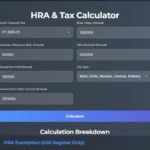1.MEANING OF AUDIT:
An audit is an independent examination of financial information of any entity,
whether profit oriented or non-profit oriented,
Irrespective of size or irrespective of legal form,
when such an examination is conducted with a view to express an opinion thereon.
{Independent:
Independent on Appearance => Means: No Relationship, No Ownership.
Independent on Mind => Means: Honesty, Integrity etc.
Examination: Means Verification
Financial information: Means Financial Statements & Books of Accounts
Size: Whether Small Business (Ex: 1 Crore Turnover) or Big Business (Ex: 1000 Crores Turnover)
To express an opinion thereon => Means to Express opinion on Financial Statements.}
2.LEGAL FORM:
Whether Registered Entity or Non-Registered Entity.
- Proprietorship firm
- Partnership firm
- Limited Liability Partnership
- Society and
- Company
- AOP or BOI
- Any other artificial Judicial
2.BOOKS OF ACCOUNTS:
Definition as per Companies Act:
Records maintained in respect of:
- All Spent money and Received Money by the company.
- All Receipts and Expenditures of the company
- All Sales and Purchases of goods and services by the company.
- All Assets and Liabilities of the company
- Cost of Items prescribed under section 148
3.FINANCIAL STATEMENTS:
Definition as per SA 200:
A structured representation of historical financial information & related notes.
Definition as per Companies Act:
- Profit and Loss account or Income and Expenditure account.
- Balance Sheet
- Cash flow Statement.
- Statement of change in equity
- Notes to financial statements
User of Financial Statements:
Users | Purpose |
Proprietor & Shareholders | To analyses performance, profitability and financial position. |
Lenders – Banks & Fin. Institutions | To Lend Money |
Government | To ensure prompt collection of Direct and Indirect Tax revenues. |
Management | For decision-making & Performance Evaluation. |
Employees | Job security, bonus. |
Suppliers | To determine the credit worthiness of the company. |
Research scholars | For study, research and analysis purpose. |
Customers | To entering into long-term contracts and arrangements. |
PURPOSE OF AUDIT: To enhance the degree of confidence for the intended users of financial statements.
4.TWO TYPES OF FINANCIAL STATEMENTS
- General Purpose Financial Statements (GPFS)
- Special Purpose Financial Statements (SPFS)
I.GENERAL PURPOSE FINANCIAL STATEMENTS (GPFS) or GENERALPURPOSE FRAMEWORK (GPFW)
In GPFS or GPFW Financial statements are prepared to meet the common financial information needs for wide range of users.
{Framework: Means Rules and Regulations}
Characteristics of GPFW:
- Fundamental accounting assumptions are used.
- Compliance with GAAP.
- Accounting standards as per AFRFW.
- Annual Preparation, periodically.
=>FAIR PRESENTATION FRAMEWORK:
In FPF F/S are prepared and presented in accordance with the requirements of such framework May deviate from the requirement of the framework” to achieve fair presentation
The words “True and Fair View” appears only in this type of financial statements.
E.g., Most of the GPFS are prepared as per fair presentation framework.
II.SPECIAL PURPOSE FINANCIAL STATEMENTS (SPFS) or SPECIAL PURPOSE FRAMEWORK (SPFW)
In (SPFS) or (SPFW) Financial statements are prepared to meet the requirement of a specific user.
=>COMPLIANCE FRAMEWORK (CFW):
In CFW F/S are prepared and presented in accordance with the requirements of such framework without any deviation.
The words “True and Fair View” do not appear in this type of financial statements.
E.g., Most of the SPFS are prepared as per compliance framework.
5.APPLICABLE FINANCIAL REPORTING FRAMEWORK (APRFW):
Framework: Means Rules and Regulations
Financial Reporting: Means Preparation and Presentation of the financial statements.
Applicable: Means Which Framework is Applicable to which Business’
E.g., For Company AFRFW is SCH III as per Companies Act, For Banks AFRFW is LFAR as per Bank Regulation Act
6.AUDITOR:
A person who conducting the audit is called Auditor.
Auditor Includes
- Engagement Partner (A person who signing the Audit Report)
- Audit Manager
- Paid assistant
- Senior article assistant
- Junior article assistant
- Any other designation
Note: If something goes wrong only Engagement Partner is Responsible.
7.OBJECTIVE OF THE AUDIT/AUDITOR:
To express opinion (Audit Report) on financial statements:
- Whether financial statements are free from material misstatements and
- Whether financial statements are prepared as per Applicable Financial Reporting Framework.
8.MISSTATEMENT:
The Difference between | ||
Amount, Classification, Presentation, Or Disclosure of F/S |
Vs | Amount, Classification, Presentation, Or Disclosure of F/S |
Reported by the Management | Required as per AFRFW | |
- The Difference between above Reported by the Management & Required as per AFRFW are not same: Then it is Misstatement.
- The Difference between above Reported by the Management & Required as per AFRFW are not same and the Difference is material: Then it is Material Misstatement
- The Difference between above Reported by the Management & Required as per AFRFW are same: Then F/S are free from Misstatement.
- When Misstatement Done Intentionally => Then it is Fraud
- When Misstatement Done Unintentionally => Then it is Error
9.FRAUD
FRAUDULENT FINANCIAL REPORTING:
- Intentional omissions of amounts
- Intentional omissions of disclosures in financial statements
- Intentional overstatement or understatement of performance / position.
MISAPPROPRIATION OF ASSETS:
- Theft of an entity’s Assets & Resources
- Misuse of an entity’s Assets & Resources
10.ERROR:
- Clerical errors, like errors of omission, errors of commission, errors of duplication and compensating errors.
- Misapplication of accounting policies (Called errors of principle).
Errors are two types.
- Self-revealing errors (Apparent on record and easily identifiable)
- Non-self-revealing errors (Not apparent and require additional efforts to detect them).










